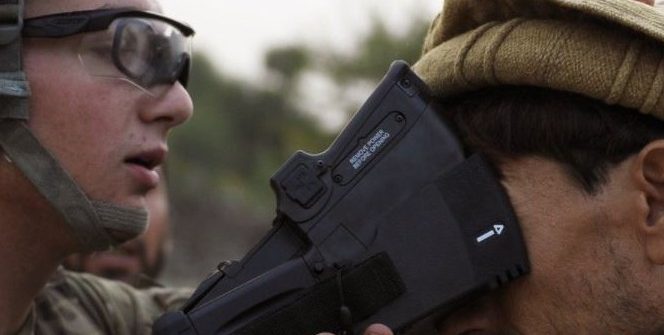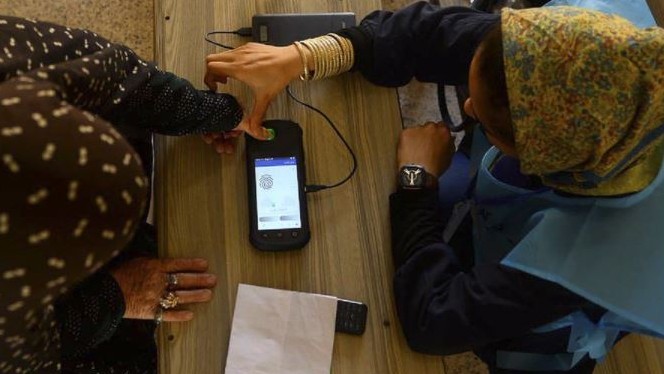TECH NEWS – In Afghanistan, a vast database of biometric information collected by the Taliban could pose a threat to those under threat of reprisals and an excellent weapon for repression.
“We went into the villages and enrolled people in this biometric data system,” recalls Peter Kiernan, a veteran of the US Marine Corps Special Operations Command. “We had a device about a foot by a foot. It would scan their fingerprints, scan their retinas and take a picture of them”.
Mr Kiernan has had a busy week. In Afghanistan he managed 12 local interpreters. For those who worked with US forces, leaving was urgent. According to a UN document seen recently by the BBC, the Taliban are stepping up their hunt for those who have worked for and cooperated with NATO and US forces. And the huge database of biometric data collected by the US military and the Afghan government could, some say, pose a threat to those at risk of reprisals.
Brian Dooley, a senior adviser to the activist group Human Rights First, told the BBC Tech Tent podcast that while very little is known definitively, “a very educated guess is that [the Taliban] either already have it or will soon have this database.
Everybody would have a hand in it
Using handheld HIIDEs (Handheld Interagency Identity Detection Equipment), soldiers like Mr Kiernan would add Afghans’ data to a repository for US biometric data. The military’s original target was to cover 80% of the population (25 million people), although the actual number achieved is believed to be much lower. On Tuesday, the news portal The Intercept reported that military sources said some of the HIIDE equipment had fallen into Taliban hands, while Reuters quoted a Kabul resident as saying that the Taliban were conducting house-to-house checks using “biometric machines”.
An Afghan official also told NewScientist that the biometric infrastructure is now in the hands of the Taliban. Mr Kiernan, a US think-tank fellow at the Truman National Security Project, says it is likely that the Taliban have access to some of the coalition’s biometric data, but it is uncertain whether they have the technical know-how to exploit it.
Annie Jacobsen, a journalist and author who has researched military biometrics, believes it is unlikely that the Taliban would have access to the large amounts of data collected by the coalition, even if they had the HIIDE machines. He added that the data was not shared in bulk with Afghan counterparts in case “some corrupt official” tipped off potential criminals.
According to Ms Jacobsen, the data from the HIIDE machines is not stored in Afghanistan but in the Pentagon‘s automated biometric identification system, which she calls a “system of systems” because of its complexity. However, she believes that, on a practical level, social media could be an easier source of information for the Taliban (which they are probably already exploiting – ed.).
“But what have the Romans given us?”
The previous Afghan government also used biometrics. The Afghan National Statistics and Information Authority processed more than six million applications for the e-Tazkira biometric ID card, which includes fingerprints, an iris scan and a photograph.
Biometrics, including facial recognition, were also used to verify voter registration during the 2019 elections. The country has even started registering businesses, and plans to collect biometric data from students studying in madrassas (these databases are much easier for the Taliban to get their hands on – ed.)
Source: BBC News



![[TGA 2025] Star Wars: Galactic Racer Focuses on High-Stakes Podrace Runs [VIDEO]](https://thegeek.games/wp-content/uploads/2025/12/theGeek-Star-Wars-Galactic-Racer-302x180.jpg)





![[TGA 2025] Resident Evil Requiem Brings Leon Back for a Double-Edged Nightmare [VIDEO]](https://thegeek.games/wp-content/uploads/2025/12/theGeek-Resident-Evil-Requiem-Leon-S-Kennedy-302x180.jpg)

![Screamer Locks In a Release Date, and the Real Fight Starts Before the Green Light [VIDEO]](https://thegeek.games/wp-content/uploads/2025/12/theGeek-Screamer-302x180.jpg)

![[TGA 2025] Star Wars: Galactic Racer Focuses on High-Stakes Podrace Runs [VIDEO]](https://thegeek.games/wp-content/uploads/2025/12/theGeek-Star-Wars-Galactic-Racer-300x365.jpg)



Leave a Reply